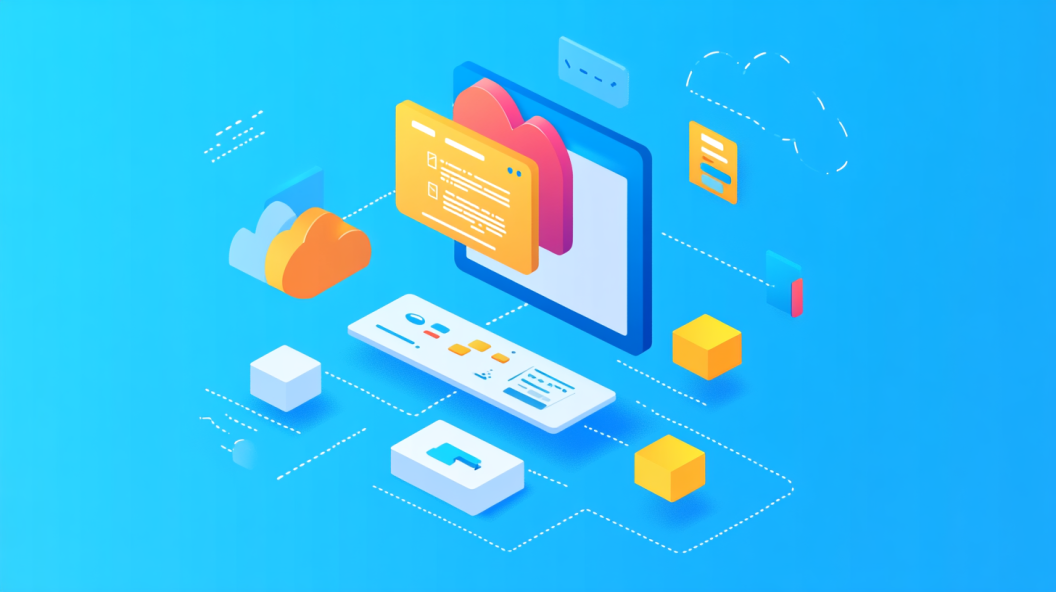Building Serverless Applications with Microsoft Azure Functions

Serverless computing revolutionizes how you build applications. It eliminates the need to manage server infrastructure, allowing you to focus on writing code. Microsoft Azure Functions stands out as a powerful platform for creating Serverless Applications. It supports various programming languages and integrates seamlessly with other Azure services. This architecture offers elastic scalability, automatically adjusting resources to meet demand and reduce costs. You only pay for the actual execution time of your functions, making it a cost-effective solution. Embrace serverless architecture to enhance your application's efficiency and performance.
Understanding Serverless Applications
What is Serverless Computing?
Serverless computing represents a paradigm shift in application development. You focus on writing code while the service provider manages the infrastructure. This approach allows you to build applications without worrying about server maintenance.
Key Characteristics
Serverless computing offers several defining features:
Event-Driven Execution: Functions execute in response to specific events, such as HTTP requests or database updates.
Automatic Scaling: The platform automatically scales resources based on demand, ensuring optimal performance.
Pay-as-You-Go Pricing: You only pay for the actual execution time of your functions, reducing costs significantly.
No Server Management: The service provider handles all server-related tasks, freeing you from infrastructure concerns.
Benefits of Serverless
Serverless computing provides numerous advantages:
Cost Efficiency: You save money by paying only for the resources you use. This model eliminates the need for constant server provisioning.
Scalability: Applications can scale automatically to handle varying workloads, ensuring consistent performance.
Faster Development: You can focus on writing code, accelerating the development process and reducing time-to-market.
Reduced Operational Overhead: With no servers to manage, you can allocate resources to other critical tasks.
Comparison with Traditional Architectures
Serverless computing differs significantly from traditional architectures. Understanding these differences helps you make informed decisions.
Cost Efficiency
In traditional architectures, you must purchase servers and rent cloud space. This approach requires a significant upfront investment. Serverless computing, however, follows a pay-as-you-go model. You pay only for the services you use, resulting in substantial cost savings.
Scalability and Flexibility
Traditional architectures demand upfront investment in servers and skilled staff. This setup can limit your ability to scale quickly. Serverless computing, on the other hand, offers unmatched scalability. The platform automatically adjusts resources to meet demand, allowing you to scale fast without additional costs. This flexibility makes serverless computing ideal for applications with unpredictable workloads.
Introduction to Microsoft Azure Functions
Microsoft Azure Functions offers a robust platform for building Serverless Applications. It allows you to focus on writing code without worrying about server management. This service supports various programming languages, making it versatile for different development needs.
Core Features
Event-Driven Programming
Azure Functions excels in event-driven programming. You can create functions that respond to specific events, such as HTTP requests or database changes. This capability enables you to build reactive Serverless Applications that automatically execute in response to real-time events. By leveraging event-driven architecture, you can enhance the responsiveness and efficiency of your applications.
Integration with Azure Services
Azure Functions seamlessly integrates with other Azure services. This integration allows you to extend the functionality of your Serverless Applications. For instance, you can connect your functions to Azure Cosmos DB for data storage or use Azure Event Hubs for event streaming. These integrations provide a comprehensive ecosystem for developing powerful applications.
Pricing Model
Azure Functions offers flexible pricing models to suit different needs. Understanding these models helps you optimize costs while building Serverless Applications.
Consumption Plan
The Consumption Plan is ideal for applications with variable workloads. You pay only for the execution time and resources your functions consume. This model ensures cost efficiency, especially for applications with unpredictable demand. The Consumption Plan automatically scales resources based on the number of requests, providing seamless scalability.
Premium Plan
For enhanced performance, consider the Premium Plan. This plan offers additional features like virtual network integration and increased memory allocation. It suits applications requiring consistent performance and advanced networking capabilities. The Premium Plan provides a fixed pricing structure, allowing you to predict costs more accurately.
By choosing the right pricing model, you can effectively manage costs while leveraging the full potential of Azure Functions for your Serverless Applications.
Setting Up Your Development Environment
Prerequisites
Before you start building serverless applications with Azure Functions, ensure you have the necessary tools and software. This preparation will streamline your development process.
Required Tools and Software
To begin, you need a few essential tools:
Visual Studio Code: A lightweight and powerful code editor. It supports various extensions for Azure Functions.
Azure CLI: A command-line tool for managing Azure resources. It simplifies tasks like creating and managing Azure Functions.
Node.js: Required for running Azure Functions Core Tools. Ensure you have the latest version installed.
These tools form the foundation of your development environment. They enable you to write, test, and deploy Azure Functions efficiently.
Setting Up Azure Account
An Azure account is crucial for accessing Azure services. Follow these steps to set up your account:
Visit the Azure website.
Click on "Start free" to create a new account.
Fill in the required information, including your email and payment details.
Verify your identity using the provided methods.
Once you complete these steps, you gain access to Azure's vast array of services. This account allows you to deploy and manage your serverless applications.
Installing Azure Functions Core Tools
Azure Functions Core Tools are essential for local development and testing. They provide a local runtime environment for Azure Functions.
Step-by-Step Installation Guide
Follow these steps to install Azure Functions Core Tools:
Open your terminal or command prompt.
Run the following command to install the tools via npm:
npm install -g azure-functions-core-tools@3 --unsafe-perm trueWait for the installation to complete. The process may take a few minutes.
This command installs the latest version of Azure Functions Core Tools. It enables you to create and test functions locally.
Verifying Installation
After installation, verify that Azure Functions Core Tools are working correctly:
Open your terminal or command prompt.
Type the following command:
func --versionCheck the output. It should display the installed version of Azure Functions Core Tools.
If you see the version number, your installation is successful. You are now ready to start developing serverless applications with Azure Functions.
Creating Your First Azure Function

Step-by-Step Guide
Creating a New Function App
Creating your first Azure Function begins with setting up a new Function App. This app serves as a container for your functions, allowing you to manage them efficiently. Follow these steps to create a new Function App:
Log in to the Azure Portal: Visit the Azure Portal and sign in with your Azure account.
Navigate to "Create a resource": Click on the "Create a resource" button located in the upper left corner of the portal.
Search for "Function App": In the search bar, type "Function App" and select it from the list of results.
Configure your Function App:
Subscription: Choose your Azure subscription.
Resource Group: Select an existing resource group or create a new one.
Function App Name: Enter a unique name for your Function App.
Runtime Stack: Choose the programming language you prefer, such as .NET, Node.js, or Python.
Region: Select the region closest to your users for optimal performance.
Review and Create: After configuring the settings, click "Review + create" and then "Create" to deploy your Function App.
Your new Function App is now ready to host your serverless functions.
Writing Your First Function
With your Function App set up, you can now write your first function. Here's how:
Access the Function App: In the Azure Portal, navigate to your newly created Function App.
Create a New Function: Click on "Functions" in the left-hand menu, then select "Add" to create a new function.
Choose a Template: Select a template that suits your needs. For example, choose "HTTP trigger" if you want your function to respond to HTTP requests.
Configure the Function:
Function Name: Provide a name for your function.
Authorization Level: Choose the appropriate authorization level, such as "Function" or "Anonymous."
Write the Code: Use the built-in code editor to write your function's code. You can also use Visual Studio Code for a more robust development experience.
Once you complete these steps, your first Azure Function is ready to execute.
Testing and Debugging
Local Testing
Testing your function locally ensures it behaves as expected before deployment. Azure Functions Core Tools facilitate local testing. Here's how to test your function:
Open Terminal: Launch your terminal or command prompt.
Navigate to Function Directory: Use the
cdcommand to navigate to your function's directory.Start the Local Runtime: Run the following command to start the local runtime:
func startTest the Function: Use tools like Postman or a web browser to send requests to your function's local endpoint.
Local testing helps you identify and fix issues early in the development process.
Debugging Tips
Debugging is crucial for ensuring your function runs smoothly. Here are some tips to help you debug effectively:
Use Logs: Insert logging statements in your code to track the function's execution flow. Azure Functions provides built-in logging capabilities.
Check Error Messages: Pay attention to error messages and stack traces. They often provide valuable insights into what went wrong.
Test Incrementally: Test small sections of your code incrementally. This approach makes it easier to pinpoint the source of errors.
By following these debugging tips, you can enhance the reliability and performance of your Azure Functions.
Deploying Azure Functions
Deploying your Azure Functions is a crucial step in bringing your serverless applications to life. You have several options to deploy your functions, each offering unique benefits and features.
Deployment Options
Using Azure Portal
The Azure Portal provides a user-friendly interface for deploying your functions. You can manage your function apps directly from the portal, making it an excellent choice for those who prefer a graphical interface. To deploy using the Azure Portal:
Access the Azure Portal: Log in to your Azure account and navigate to the Azure Portal.
Select Your Function App: Locate your function app from the dashboard or search for it using the search bar.
Deploy Your Code: Use the "Deployment Center" option to upload your code files. You can choose from various deployment sources, such as local files, Azure Repos, or external Git repositories.
Configure Settings: Adjust any necessary settings, such as environment variables or application settings, to ensure your function runs smoothly.
Deploying through the Azure Portal allows you to visually manage and configure your serverless applications with ease.
For those who prefer automation, Continuous Deployment with GitHub offers a seamless way to keep your serverless applications up-to-date. By linking your GitHub repository to your Azure Function App, you can automatically deploy changes whenever you push updates to your repository. Here's how to set it up:
For those who prefer automation, Continuous Deployment with GitHub offers a seamless way to keep your serverless applications up-to-date. By linking your GitHub repository to your Azure Function App, you can automatically deploy changes whenever you push updates to your repository. Here's how to set it up:
Connect to GitHub: In the Azure Portal, navigate to your function app and select "Deployment Center."
Choose GitHub as the Source: Select GitHub as your source control provider and authenticate your GitHub account.
Select Repository and Branch: Choose the repository and branch you want to deploy from.
Configure Build Settings: Set up any necessary build configurations, such as runtime stack or build commands.
Continuous deployment ensures that your serverless applications are always running the latest code, reducing manual intervention and potential errors.
Monitoring and Logging
Monitoring and logging are essential for maintaining the health and performance of your serverless applications. Azure Functions integrates with Application Insights to provide comprehensive monitoring capabilities.
Setting Up Application Insights
Application Insights is a powerful tool for monitoring your function apps. It collects telemetry data, such as request rates, response times, and failure rates, helping you gain insights into your application's performance. To set up Application Insights:
Enable Application Insights: In the Azure Portal, navigate to your function app and select "Application Insights" from the menu.
Create or Link an Insights Resource: You can either create a new Application Insights resource or link an existing one.
Configure Telemetry: Customize the telemetry data you want to collect, such as custom events or metrics.
With Application Insights, you can monitor your serverless applications in real-time, allowing you to identify and resolve issues quickly.
Analyzing Logs
Analyzing logs is crucial for understanding the behavior of your serverless applications. Azure Functions stores logs in Application Insights tables, providing a centralized location for all your logging data. To analyze logs:
Access Logs in Application Insights: Navigate to your Application Insights resource and select "Logs" from the menu.
Use Kusto Query Language (KQL): Utilize KQL to query and filter your logs, enabling you to pinpoint specific events or errors.
Visualize Data: Create charts or dashboards to visualize your log data, making it easier to interpret and act upon.
By effectively analyzing logs, you can enhance the reliability and performance of your serverless applications, ensuring they meet your users' needs.
Practical Use Cases of Serverless Applications

Serverless Applications have transformed how you approach software development. They offer flexibility and efficiency, making them ideal for various real-world applications. Let's explore some practical uses and industry examples.
Real-World Applications
Automated Data Processing
You can use Serverless Applications to automate data processing tasks. Imagine you need to process large datasets regularly. With serverless computing, you can create functions that automatically handle data as it arrives. These functions can filter, sort, and analyze data without manual intervention. This automation saves time and reduces the risk of human error.
Real-Time File Processing
Serverless Applications excel in real-time file processing. For instance, you might need to process images or documents as soon as they are uploaded. By using serverless functions, you can automate this process. The functions can resize images, convert file formats, or extract text from documents. This capability ensures that your applications respond quickly to user actions.
Industry Examples
E-commerce
In the e-commerce industry, Serverless Applications provide significant advantages. You can use them to manage inventory, process orders, and handle customer queries. For example, a serverless function can automatically update stock levels when a purchase is made. This automation ensures that your inventory data remains accurate and up-to-date.
IoT Solutions
Serverless Applications play a crucial role in IoT solutions. Devices connected to the Internet of Things often generate large amounts of data. You can use serverless functions to process this data in real-time. These functions can analyze sensor data, trigger alerts, or perform automated actions based on specific conditions. This capability enhances the functionality and responsiveness of IoT systems.
Serverless Applications offer numerous benefits across various industries. They enable rapid development and deployment, allowing you to focus on delivering value to your users. By leveraging serverless computing, you can create efficient, scalable, and responsive applications that meet the demands of modern users.
Advanced Topics in Serverless Applications
As you delve deeper into serverless applications, understanding advanced topics becomes essential. These topics include security best practices and performance optimization, which are crucial for building robust and efficient serverless solutions.
Security Best Practices
Security in serverless applications requires a comprehensive approach. You must ensure that your applications remain secure from potential threats.
Authentication and Authorization
Authentication and authorization form the backbone of secure serverless applications. You should implement strong authentication mechanisms to verify user identities. Consider using OAuth or OpenID Connect for secure authentication. Authorization ensures that users access only the resources they are permitted to use. Role-based access control (RBAC) can help manage permissions effectively.
Data Protection
Protecting data is vital in serverless applications. You should encrypt sensitive data both at rest and in transit. Use Azure Key Vault to manage encryption keys securely. Regularly audit your data access logs to detect any unauthorized access attempts. By prioritizing data protection, you safeguard your applications against data breaches.
Performance Optimization
Optimizing performance in serverless applications enhances user experience and reduces costs. You can achieve this by focusing on key areas like cold start mitigation and efficient resource management.
Cold Start Mitigation
Cold starts occur when a serverless function initializes for the first time, causing delays. To mitigate cold starts, you can keep functions warm by periodically invoking them. This practice reduces initialization time. Additionally, optimizing your code and minimizing dependencies can help decrease cold start durations.
Efficient Resource Management
Efficient resource management ensures that your serverless applications run smoothly. You should monitor execution times and optimize code to reduce resource consumption. Implement caching strategies to store frequently accessed data, reducing the need for repeated computations. By managing resources efficiently, you enhance performance and cost-effectiveness.
Incorporating these advanced topics into your serverless applications will help you build secure, high-performing solutions. As you continue to explore serverless computing, remember that security and performance optimization are ongoing processes. Stay informed about the latest best practices to keep your applications at the forefront of technology.
Azure Functions offers you a powerful tool to build scalable, cost-effective applications. You can focus on writing code without worrying about server management. This approach saves time and money, making it ideal for organizations of all sizes. As you explore serverless computing, consider diving into advanced topics like security and performance optimization. These areas will enhance your applications' robustness and efficiency. Embrace the opportunity to experiment and innovate with serverless solutions. By doing so, you can unlock new possibilities and drive your projects forward with confidence.
See Also
Scaling Apps with Microsoft Azure Functions Made Easy
Deploying Websites with Microsoft Azure App Services
Rapid Cloud Solution Deployment via Azure Marketplace
Must-Have Tools for Cloud Pros in Microsoft Azure
Optimizing Code Infrastructure with Azure DevOps & Terraform
